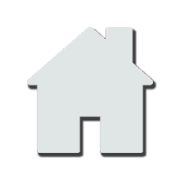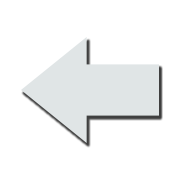Abstract #504
Section: Animal Health (orals)
Session: Animal Health 4
Format: Oral
Day/Time: Wednesday 2:15 PM–2:30 PM
Location: Room 262
Session: Animal Health 4
Format: Oral
Day/Time: Wednesday 2:15 PM–2:30 PM
Location: Room 262

# 504
Automated detection of lameness using activity monitoring.
S. Paudyal*1,2, G. Solano1, P. Melendez3, I. Roman-Muniz1, R. Callan4, F. Maunsell5, J. Velez6, P. Pinedo1, 1Department of Animal Sciences, Colorado State University, Fort Collins, CO, 2Texas A&M University, College Station, TX, 3Department of Population Health, College of Veterinary Medicine, University of Georgia, Athens, GA, 4Department of Clinical Sciences, College of Veterinary Medicine, Colorado State University, Fort Collins, CO, 5Department of Clinical Sciences, College of Veterinary Medicine, University of Florida, Gainesville, FL, 6Aurora Organic Dairy, Platteville, CO.
Key Words: activity, locomotion score
Automated detection of lameness using activity monitoring.
S. Paudyal*1,2, G. Solano1, P. Melendez3, I. Roman-Muniz1, R. Callan4, F. Maunsell5, J. Velez6, P. Pinedo1, 1Department of Animal Sciences, Colorado State University, Fort Collins, CO, 2Texas A&M University, College Station, TX, 3Department of Population Health, College of Veterinary Medicine, University of Georgia, Athens, GA, 4Department of Clinical Sciences, College of Veterinary Medicine, Colorado State University, Fort Collins, CO, 5Department of Clinical Sciences, College of Veterinary Medicine, University of Florida, Gainesville, FL, 6Aurora Organic Dairy, Platteville, CO.
Monitoring of locomotion disorders is traditionally performed by visual observation, using locomotion scoring (LS), which is subjective, time-consuming, and prone to individual bias. Recently developed activity systems could potentially replace visual assessment. Our objective was to characterize the dynamics of activity parameters and milk yield (MY) in animals submitted for LS at multiple points during lactation. Multiparous Holstein cows (n = 310) from a dairy in northern Colorado, USA were afixed with a pedometer (IceQube, IceRobotics, Edinburgh, UK) on one rear leg at 12 ± 8 DIM and monitored for 7 mo for lying time (LT; min/d), number of steps (ST; n/d), lying bouts (LB; n/d), and motion index (MOI; units/d). MY (kg/d) and an estimated probability of lameness (%) provided by the system were also available. Cows were maintained in a free stall barn and were allowed access to grazing during part of the study period. Cows were evaluated for lameness biweekly using a 1 to 5 numerical LS system (1 = sound, 5 = severely lame). Mixed linear models were used to calculate LSM for activity parameters and MY by LS, including parity, DIM, access to pasture, and presence of estrus in the models. As presented in Table 1, activity parameters varied depending on LS. LS5 was associated with greater values for LT, LB, and probability of lameness, while ST and MOI were smaller. The variables in study evidenced significant differences associated with high LS, indicating that activity parameters have the potential to be used for the detection of locomotion disorders.
Table 1 (Abstr. 504). Least squares means (± SE) for activity variables and MY across 5 locomotion scores (LS)
a–cDifferent superscripts within a row represent significant differences at P < 0.05.
| Parameter | LS1 | LS2 | LS3 | LS4 | LS5 |
| Lying time (min/d) | 575 ± 2.0a | 570 ± 13a | 585 ± 20a | 675 ± 27b | 894 ± 121b |
| Lying bouts (n/d) | 18.3 ± 0.11a | 19.2 ± 0.64ab | 19.0 ± 0.96ab | 21.8 ± 1.34b | 27.2 ± 5.83c |
| Steps (n/d) | 2,760 ± 27c | 2,985 ± 161c | 2,977 ± 245c | 2,079 ± 342b | 700 ± 1,489a |
| Motion index (units/d) | 9,838 ± 106c | 10,902 ± 624c | 10,480 ± 947c | 7,157 ± 1321b | 2,194 ± 5,752a |
| Probability of lameness (%) | 15.2 ± 0.2a | 15.2 ± 0.9a | 15.2 ± 1.5a | 25.4 ± 2.1b | 60.5 ± 7.9c |
| Milk yield (kg/d) | 35.9 ± 0.18a | 34.8 ± 1.06a | 36.5 ± 1.57a | 34.9 ± 2.16a | 38.4 ± 9.60a |
Key Words: activity, locomotion score




